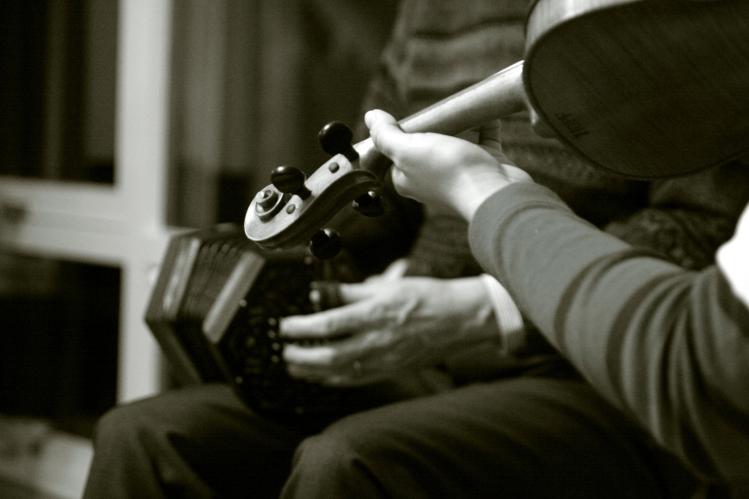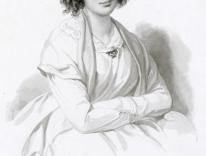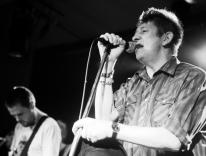
The accordion player next to me has handed off his instrument and he’s step dancing on the pub floor, soles smacking heavily on the downbeats. It’s a Thursday night session in Manhattan’s East Village where musicians of all ability levels come to share traditional Irish music. I’ve never heard this particular tune before, but as the third repetition plays out, I’m playing along on my fiddle, picking up on its basic shape. The bar’s patrons are clapping and cheering; we musicians try to watch each other and the dancer at the same time. We don’t all know each other, but we all speak the same joyful language, one I’ve been learning in fits and starts for twenty years, first in lessons, now in traditional Irish sessions.
Like all languages, traditional Irish music has its own grammar. There are jigs, reels, airs, and waltzes, as well as polkas, slip jigs, and hornpipes. There’s the switch between one reel and the next, the rhythm of a set of tunes played together. It’s looser and more improvisational than the classical violin style I spent most of my childhood and teenage years learning. Success as a fiddler is measured less by technical virtuosity than by whether the listeners are tapping their feet. If the violin sings, the fiddle dances; the focus is on participation rather than perfection. As flute player and poet Ciaran Carson wrote in Last Night’s Fun, a collection of essays about traditional Irish music, “Where tunes are concerned, there is no final version. The notion of correctness is anathema.”
As an aural tradition, Irish music has infinite variations. Every set in every session is different. Unless I make a recording, I know I’ll never hear the same reels played the same way again, even if I play with the same musicians. There’s a certain bittersweetness to this fact: I can’t recall the haunting tune taught to me by a visiting Peruvian fiddler whose name I don’t remember, and there’s no way for me to find it again. But more often I like the impermanence. It reminds me of how important it is to be fully present, and how connected I am to the particulars of each session. The jig I play, and the specific way I play it, joins me to the woman who taught it to me; and to the fiddler who taught my teacher; and to the musicians listening to me now, who might add it to their own constantly shifting repertoires.
Though we tend to revere soloists, music is a fundamentally communal activity. Playing on my own is always practice for playing with and for others. I played in an orchestra in college, and after I moved to New York, the city’s extensive Irish session scene—people gather across the city to play every single night of the week—helped me feel less alone. Some of these sessions are more welcoming to beginners, while others cater to experienced players. All are anchored by professional leaders and mostly populated by regulars who return week after week.
When the dancer finishes, he returns to his accordion and to the banter that fills the downtime between sets. I used to shrink from these moments, which can feel awkward—without the music, what connects us? But tonight, two fiddlers reminisce about playing in the Bronx forty years ago, staying out until ten in the morning, their fingertips black from pressing so hard on the fingerboard for so long (“the craic was mighty”). One of the regulars, Mimi, has ordered soda-bread scones for the whole table, which arrive slathered in butter and topped with homemade berry jam. The waitress comes over to collect glasses and stays to sing a delicate rendition of “Wild Mountain Thyme.” We join her on the chorus with unrehearsed harmonies. These moments help differentiate a session from a gig: we are here not to provide a program for pub patrons, but to foster a musical community. Many of these musicians have become my friends, and their musical preferences form part of our friendship. Hearing one of Rogan’s favorite sets calls to mind her wry sense of humor, her loud “Hup!” signaling an upcoming transition between tunes, and the reel she introduces by four different names.
Some sheet music is available, but I’ve always learned Irish music by ear. Nobody at a session pulls out a music stand; we all learn by listening. Whenever I’ve taken lessons, my teachers and I have played each individual phrase back and forth until I master it, building the melody together, each adjusting to take into account the subtle differences of the other. It’s not something I can easily achieve alone—playing along with recordings, my usual method of at-home learning, lacks the conversational, responsive quality of playing with another musician. And, because I can always replay a recording, it doesn’t require me to listen with the same level of attentiveness. During a set, my ears and mind are always open. I’m not preoccupied with potential responses or counterarguments, waiting for my turn to shine or picking apart the flaws in another musician. Instead, I’m focused on processing what I’ve been given, seeking out its beauty, reflecting and responding as best as I can. I wish I could bring this careful attention to all my conversations.
No matter how carefully I listen, though, I’ll never learn if I don’t actually start playing along. I have to accept the inevitable imperfection of my first—and second, and third—attempts. Someone, if only my long-suffering roommates, will hear me muddling through the same three measures again and again, trying to correct the same mistake seven times in a row. (Carson again: “While there is no ultimate correctness in Irish music, there is wrong.”) Even after I’ve practiced, bringing a set of tunes out into the world during a session is an exercise in vulnerability. I might fumble the transition. My fingers might slip. I might be distracted by an unexpected musician-turned-dancer in the pub. But my friends and teachers are generous and considerate. We strive to pay attention; we forgive each other when we fall short. The rewards always outweigh the risks: it’s fun to play a new set, to be heard and to provide an opportunity for others to join in, to help create that moment of connection.
After my set comes another, and I try to catch hold of the tunes I don’t recognize. After the session ends, I bike home along First Avenue and let the particulars of each piece blur into a warm glow in my mind. Next week, maybe one of these pieces will be performed again and I’ll find myself playing along, plucking the memory of the tune from between my memories of dancing feet and laughter, hoping to play it just right but knowing that to play it at all is enough.
Please email comments to [email protected] and join the conversation on our Facebook page.
Previous Story
Christ on Skid Row
Next Story
Two Roads Home


